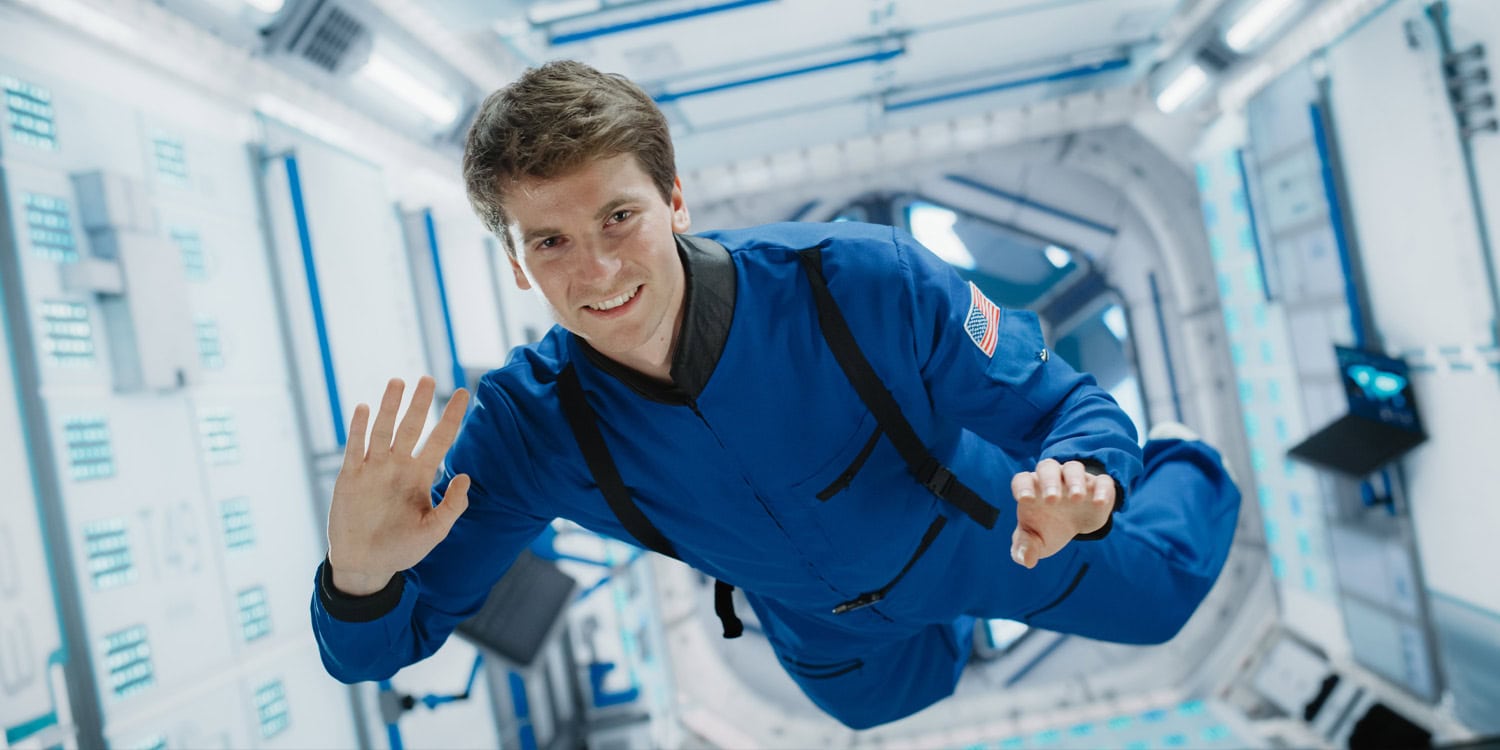A recent study examining the sleep patterns of healthy men and women who participated in a parabolic flight—an experience that exposes individuals to brief periods of microgravity and hypergravity—revealed surprising results. According to actigraphy, a method used to objectively measure sleep by tracking movement, participants experienced more fragmented sleep and more frequent awakenings on the night following the flight compared to the night before. Strangely, however, these individuals self-reported that they slept better on the night after the flight. The findings were published in the Journal of Sleep Research.
As space travel expands and humanity endeavors to become an interplanetary species by colonizing Mars and potentially other celestial bodies, the number of individuals residing in space for prolonged periods will increase. In parallel with this, scientific knowledge about the effects of space flight on human physiology is growing. However, much remains unknown, especially regarding how the unique environment of space—characterized by the absence of gravity—impacts human health, including sleep.
The International Space Station (ISS) has been instrumental in advancing our knowledge in this area. The ISS is a large, habitable spacecraft that orbits Earth and is continuously occupied by astronauts who spend weeks and months at a time living and working there. Research indicates that astronauts on the ISS, who experience prolonged weightlessness, often suffer from severe sleep problems. These issues tend to resolve once they return to Earth, suggesting a link between gravity and sleep quality.
But whether these sleep disturbances are caused solely by changes in gravity or by a combination of other factors, such as altered light exposure, diet, noise, and elevated stress levels during spaceflight, is still unclear.
Study author Barbara Le Roy and her colleagues aimed to isolate the effects of gravity changes on sleep by focusing on participants of parabolic flights. Parabolic flights are designed to simulate the conditions of space by creating brief periods of weightlessness through a series of steep, curved flight maneuvers. During each parabola, the aircraft first climbs sharply, generating increased gravity (hypergravity), before descending in a free-fall motion, which simulates the microgravity of space for about 20 to 30 seconds. These flights are not only used for astronaut training and scientific research but are also available as commercial experiences for the public.
To investigate how these gravity changes affect sleep, Le Roy and her team asked participants to wear actigraphs—a wrist-worn device that tracks movement and is used to assess sleep patterns—on the night before and the night after the flight. Participants also filled out sleep diaries and completed questionnaires about their sleep quality, anxiety, and depression. The researchers hypothesized that the gravity changes experienced during the flight would lead to poorer sleep quality on the night after the flight.
How the Study Was Conducted
The study involved participants from three different parabolic flights, conducted by Novespace between October 2022 and April 2023 in Bordeaux Mérignac, France. These flights took place aboard an Airbus 310 Zero-G aircraft, with each flight starting at around 9 a.m. and consisting of 31 parabolas. Each parabola began with a hypergravity phase, where participants experienced approximately 1.8 times the normal gravitational force (1.8 g) for about 20 seconds, followed by a microgravity phase lasting approximately 22 seconds. To mitigate the risk of motion sickness, all but one participant took scopolamine, an anti-nausea medication, on the morning before the flight.
In addition to wearing actigraphs, participants completed two sleep quality assessments: the Pittsburgh Sleep Quality Index, which measures sleep quality over the past month, and a visual analogue scale where participants rated their sleep quality. Anxiety and depression levels were also assessed using the Beck Anxiety Inventory and the Hospital Anxiety and Depression Scale, respectively.
Actigraphy data showed that participants’ sleep was more fragmented on the night after the parabolic flight, with more awakenings compared to the night before. This objective data suggested that the experience of gravity changes negatively impacted sleep quality. However, when participants were asked to self-report their sleep experience, they indicated that they slept better on the night after the flight. They reported fewer awakenings, feeling more rested, and having better overall sleep quality.
This discrepancy between perceived and actual sleep quality raises interesting questions about the influence of gravity changes on sleep. One possible explanation is that the novelty and excitement of the parabolic flight might have created a positive bias in participants’ self-assessment of their sleep. Alternatively, the longer sleep duration observed in some participants after the flight might have led them to feel more rested, even if their sleep was more fragmented.
Importantly, the researchers found no significant association between the amount of scopolamine taken or the participants’ previous experience with parabolic flights and their sleep quality. Interestingly, participants who typically had poorer sleep quality or more sleep problems seemed to experience less sleep fragmentation and fewer awakenings after the flight. This finding suggests that individuals with pre-existing sleep issues might be less sensitive to the disruptive effects of gravity changes.
“Our results revealed a sharp discrepancy between subjective and objective sleep data. Though participants reported having better sleep quality the night after the flight, waking up less, and feeling more rested, actigraphy data showed that they had more awakenings, more sleep fragmentation, and that the actual sleep percentage was lower. These preliminary findings show that having been exposed to daytime gravity changes may affect nighttime sleep, even when other factors such as diet, circadian rhythm and sleep conditions are kept constant,” the study authors concluded.
The study potentially sheds light on the effects of gravity changes on sleep quality. However, it should be noted that parabolic flights involve relatively short-lasting changes in gravity, not the extended periods of microgravity typical of spaceflight. It is unclear how much parabolic flight experiences can be considered a valid simulation of actual spaceflight conditions.
The paper, “Is sleep affected after microgravity and hypergravity exposure? A pilot study,” was authored by Barbara Le Roy, Aurore Jouvencel, Anika Friedl-Werner, Ludmila Renel, Youcef Cherchali, Raouf Osseiran, Ernesto Sanz-Arigita, Jean-René Cazalets, Etienne Guillaud, and Ellemarije Altena.




